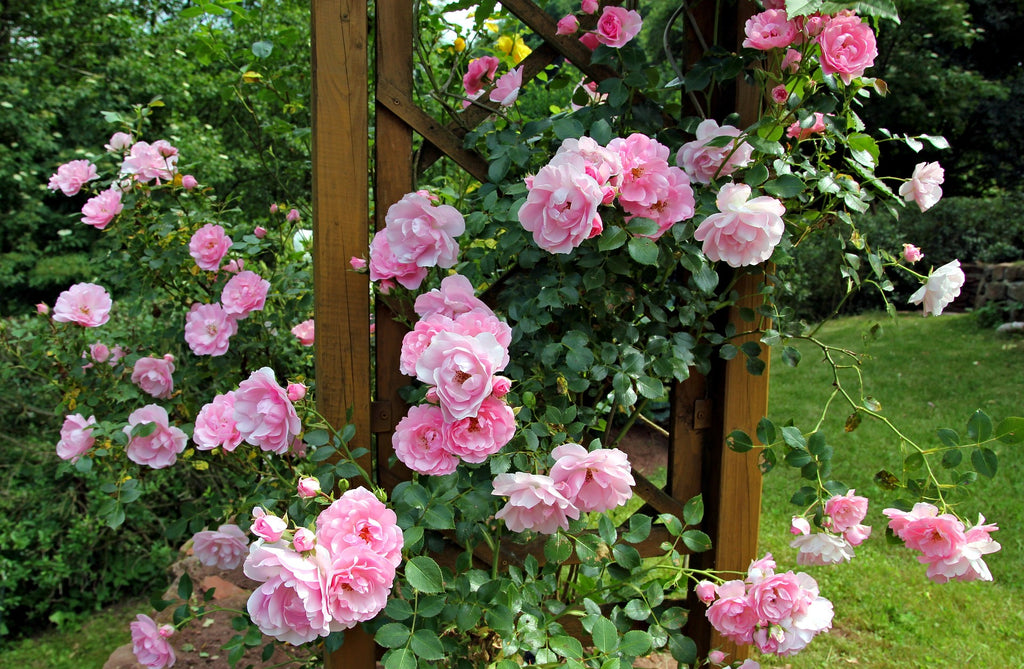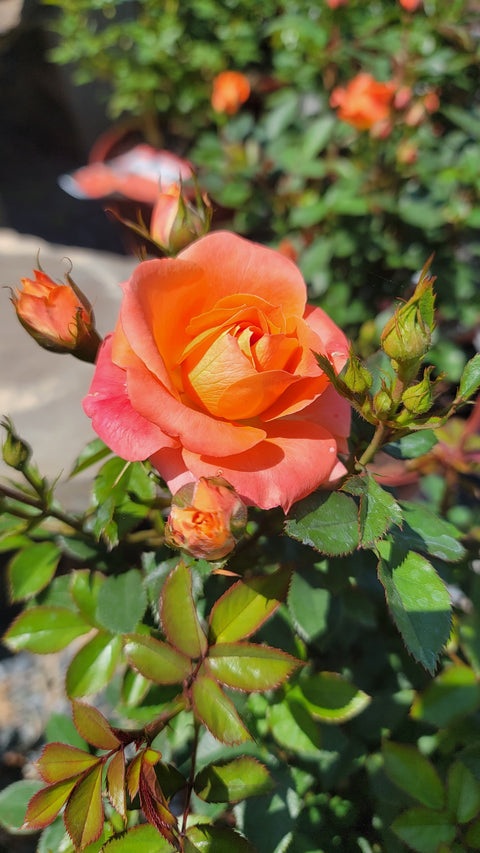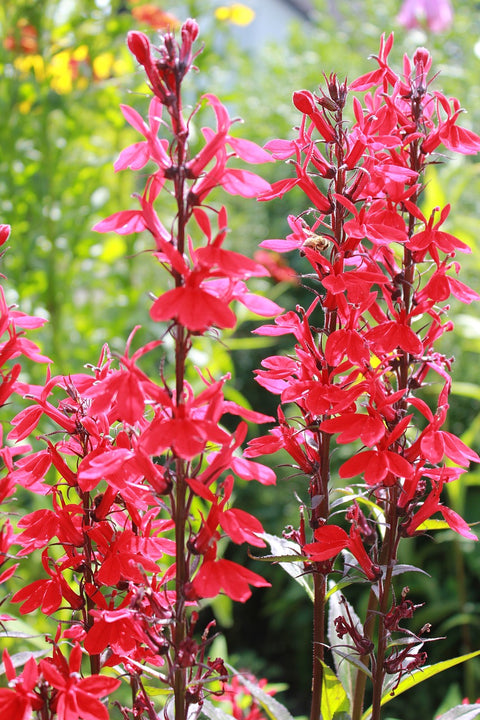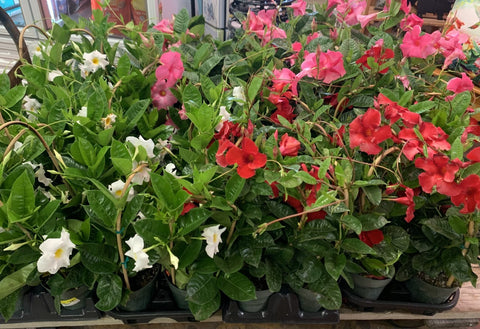Roses are one of the most classic flowers in the world. They are loved for their beauty, fragrance, and symbolism. There are many different types available on the market and each has its own characteristics. If you live in the Mid-Atlantic and want to grow roses in your garden, it is essential to understand each type of roses and its proper care.
Types of Roses:
- Hybrid Tea Rose: One of the most popular types with large, single flowers on longer stems. They come in a wide range of colors and are often fragrant. They are best for cutting and arranging.
-
Floribunda Rose: They were created by crossing a hybrid tea with a Polyantha or old world rose and are hardier than a hybrid tea type. Flowers are held at the end of each stem in clusters having 10-15 flowers. They re-bloom if deadheaded and can be slightly fragrant.
-
Grandiflora Rose: Another cross between Hybrid Tea and Floribunda developed in the 1950's. Flowers are larger than the floribunda and held in clusters of 6-10 flowers at the terminal end of the stem. Plants have been developed with stronger stems but tend to fold over from the weight of the flowers.David Austin's, and others. The flower from the top to the ground. They develop large stems that can grow to 6-15 feet and require some form of stabilization. Climbers are usually attached to a wall, grown on an obelisk, over arches, or supported by pillars. They require more pruning but create a large display of flowers.
-
Native: Roses native to Maryland include Rosa virginiana, Rosa palustris, and Rosa carolina are all native to our area. They can take drier (R. carolina) or wetter (R. palustris and R. virginiana) conditions, and are salt tolerant. These produce the sought-after hips that are used for making tea. These do not require pruning and grow as shrubs. Many are found along shorelines and along hedgerows.

Seasonal Care for Roses in Maryland and Southern Pennsylvania:
Fall
Protect from upcoming cold weather
- As the weather begins to turn cool, stop all forms of fertilization to allow your rose to go dormant prior to cold temperatures.
- Mulch may be applied to a depth of 2-3 inches to protect roots. Do not allow the mulch to touch the stems.
- Deadhead if necessary to remove any spent flowers.
- If your rose is located on the northwest side of the property and exposed to the cold winter winds consider wrapping or fronting with some stakes and burlap for protection.
Winter
Prevent insects and diseases and plan for pruning this season
- When the weather begins to warm in mid to late February apply dormant oil or Neem oil to your roses to protect from diseases that can overwinter on stems.
- As the buds begin to swell in late winter a protectant spray of Copper fungicide will also help prevent issues.
- Pruning - Pruning usually starts around President's Day in mid-February in the Mid-Atlantic. It should be finished just prior to the buds swelling. This is weather dependent and you should observe your roses beginning in February to check for coloration in buds. Remove dying branches, crossing branches, and prune to desired shape.
Spring
Fertilize, mulch, and manage grubs. Learn more about grub control here.
- Fertilize roses in early spring at bud swell using a premium rose food as roses require not only NPK but iron, zinc, manganese, calcium, sulfur, and boron. Espoma Rose-tone is made specifically for roses and Coast of Maine Stonington Blend works very well also.
- Manage Mulch – Since most roses are grafted, do not let the mulch cover up or touch the graft. This will encourage growth of the root graft and your rose will not grow properly. Remove mulch or pull it away from the rose base in the growing season.
Summer
Watering, Monitor and control insects and diseases, and deadhead
- Watering – Roses require watering at least weekly as the large flowers utilize a large amount.
- A gentle weekly rain of I inch is usually enough but, if the heat and wind dry the garden quickly additional watering may be required.
- Knowing that roses can develop fungal issues, do not water from the top instead use a soaker hose or hand water at the base of the plant.
- Diseases and Pests - Issues with roses include fungal infections such as Black Spot, Powdery Mildew, Botrytis, and others.
- Remember fungal infections are more prevalent when humidity is high in the evenings or rains are heavy with warm humid weather after the rain.
- If the weather indicates that fungal spores may be present, preventatively apply a fungicide prior to seeing the infection. This will greatly lessen the infection or prevent it altogether.
- Insects that can do harm or make the roses unsightly are aphids, Japanese Beetles, thrips, and rose midges.
- Once you find that the insects are present use the IPM protocol to see if beneficial bugs will arrive and remove the bad bugs.
- If no help arrives treat it with an insecticide that lists the insect you are trying to control. Insecticides are bug specific. Treat plants early in the morning trying not to spray the buds or flowers so pollinators are not as adversely affected.
- Deadheading – when deadheading your roses take the stem to the first leaf with 5 leaflets.
- Try to keep the outline of the rose symmetrical.
- If you must remove a larger stem, snip to a leaf with five leaflets even though it may not be the first one.
- When you keep your roses deadheaded, they will produce more flowers if the bush is properly cared for.
Roses are a valuable and beautiful addition to any garden, and there are many different types to choose from. With a little basic care, they can provide fragrant bouquets all summer for inside your home while adding grace and beauty to your property and providing habitat for wild birds. Whether you prefer the classic beauty of Hybrid Tea roses or the low maintenance of Shrub roses, there is a rose for every garden. By following a regular schedule of care, you can enjoy healthy, beautiful roses in your Mid-Atlantic garden year after year.

























